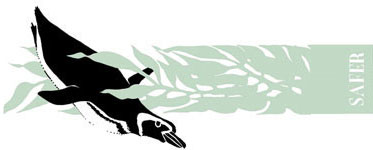Peat Problems

In 1985, British Armed Forces were on Bense Island for a training exercise and somehow started a fire (no one has admitted exactly how). The vegetation here is highly flammable, as is the peaty soil itself and unfortunately this fire burned for several months before it extinguished itself. Left behind was a scorched-earth scar devoid of all vegetation. With no plants’ roots to bind the soil, the strong subantarctic winds have set to work moving the dry, friable peat towards the eastern side of the island where it has accumulated in dunes, piled up against healthy tussock grass and smothering all shorter vegetation. The peat is like loose coffee grounds and does not support new plant growth. In the worst affected areas, the peat is now over 1.5 m (5 feet) thick. Crucially, this has resulted in the death of plants that were otherwise unaffected by the fire, and ruined a lot of wildlife habitat. We watched the front of the peat deposit march eastwards in the early 2000s until it finally engulfed the area around our research hut in 2007. Since then it has been joined by some drifting sand, and the deposits have now moved out into Beazley Bay, where at low tide you can walk out and dig down through over 30 cm (1 foot) of peat before you reach the original sandy sea bottom. We have plans to revegetate this area by planting tussock grass and boxwood across the burned area.
